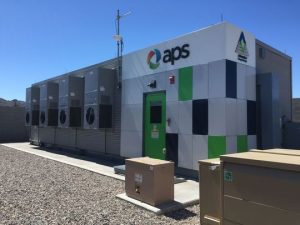 Recent events have caused the stationary energy storage market to begin re-evaluating and emphasizing safety approaches. While the market is poised for serious growth in the coming years, with many states releasing gigawatt (GW) storage targets, a rash of lithium-ion battery fires have caused hesitation in the marketplace.
Recent events have caused the stationary energy storage market to begin re-evaluating and emphasizing safety approaches. While the market is poised for serious growth in the coming years, with many states releasing gigawatt (GW) storage targets, a rash of lithium-ion battery fires have caused hesitation in the marketplace.
South Korea, which currently maintains about 25% of the world’s lithium-ion battery energy storage capacity, has led the world in battery energy storage capacity for 2 consecutive years. However, there have been 21 documented fires in the last 20 months, equating to tens of millions of dollars in asset loss. Of the approximately 5 GWh of total installed capacity in South Korea, 200 MWh, or 4% of the installed capacity, has been affected. Fifty percent of South Korea’s energy storage systems have been taken offline.
Earlier this month, these issues hit home when a lithium-ion battery operated by Arizona Public Service (APS) caused serious injuries to 4 firefighters who were the first responders to lithium-ion battery issue in Surprise, AZ. Investigators have understood that during the APS fire an explosion occurred when the first responders opened the door to the battery facility after it was deemed safe to enter.

It was “inevitable” – at least to those of us who have worried about safety risk for a living — because the storage market has literally been mushrooming all across the nation, with Li-Ion batteries being the predominant technology employed for utility-scale installations and home systems alike. The market has grown so much, so quickly that codes & standards, and preventive regulations have not kept pace.
– Arthur O’Donnell – The Energy Overseer
This event has put many system integrators and end users on edge when many large lithium-ion battery projects are planned in the years to come. The South Korean battery fires were easily dismissed by many American industry representatives and chalked up to poorly integrated systems. The APS fire will begin a serious re-evaluation of safety approaches as Authorities Having Jurisdiction (AHJ) will tighten up safety requirements for battery energy storage systems.
At Li-ion Tamer, we provide safety products and solutions for enabling the prevention of thermal runaway. Our products are specifically for lithium-ion energy storage systems and provide early detection of catastrophic failure. The Li-ion Tamer system is integrated in such a way that can isolate failures before there is ever an issue. Our approach to safety has won several awards, such as recognition at the ARPA-e Energy Innovation Summit, the GameChanger award at the annual ConnectedPlant Conference, and the opportunity to be presented to Congress as an SBIR success story with a successfully commercialized product.
 If you are interested in learning more about our product and how it can be integrated into your systems to prevent thermal runaway, please contact us.
If you are interested in learning more about our product and how it can be integrated into your systems to prevent thermal runaway, please contact us.
